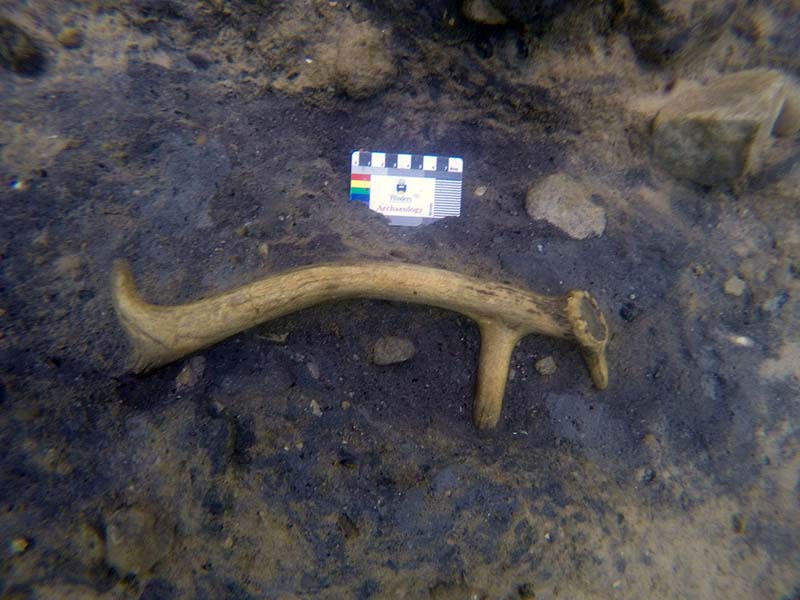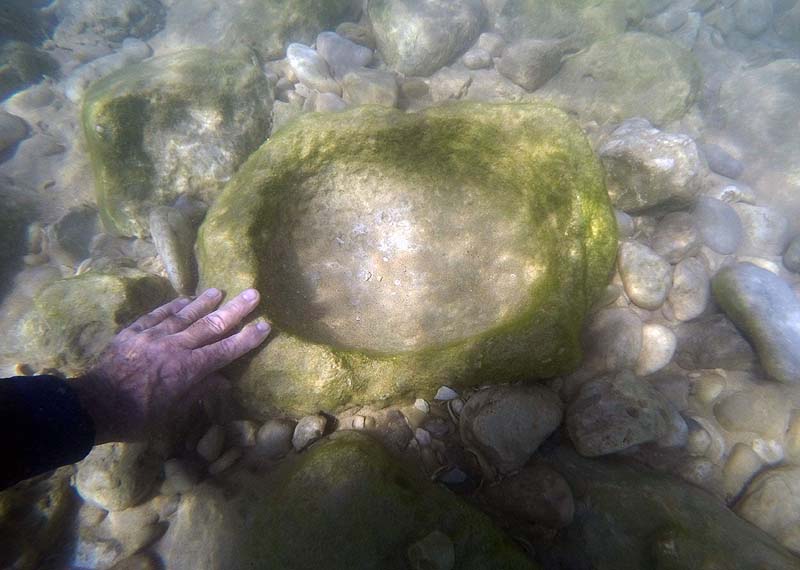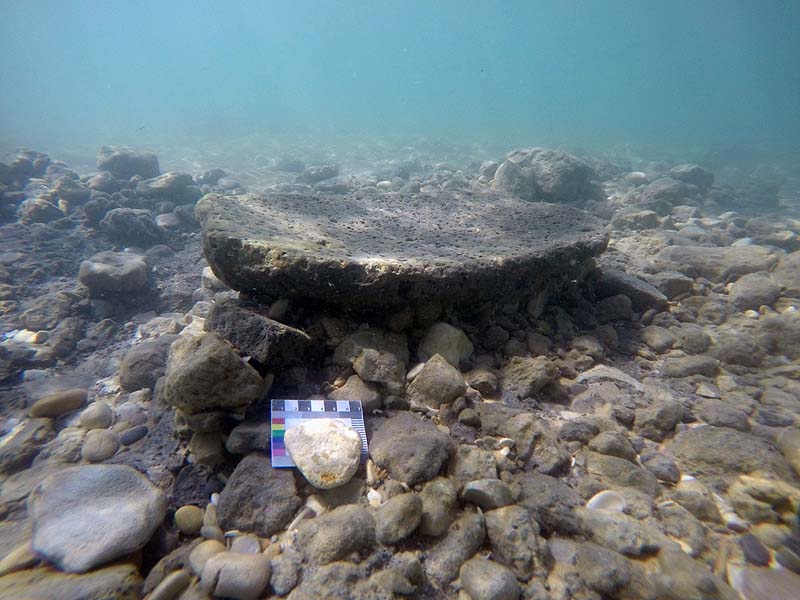Researchers Ehud Galili, Jonathan Benjamin, Vered Eshed, Baruch Rosen, John McCarthy, and Liora Kolska Horwitz, from the University of Haifa, Flinders University in Adelaide, South Australia, and the Israel Antiquities Authority on Wednesday published the results of their underwater archaeological investigations at the submerged Neolithic settlement of Tel Hreiz (7500 – 7000 Before Present), off the Carmel coast of Israel in PLOS One is a peer-reviewed open access scientific journal published by the Public Library of Science.
The article (A submerged 7000-year-old village and seawall demonstrate earliest known coastal defense against sea-level rise) says the underwater archaeological site has yielded well-preserved architectural, artefactual, faunal and human remains, and, based on archaeological context, mode of construction and radiometric dating, the researchers demonstrated the feature was contemporary with the inundated Neolithic settlement, and concluded that it served as a seawall, built to protect the village against Mediterranean Sea-level rise.

‘);
_avp.push({ tagid: article_top_ad_tagid, alias: ‘/’, type: ‘banner’, zid: ThisAdID, pid: 16, onscroll: 0 });
“The seawall is unique for the period and is the oldest known coastal defense worldwide,” they explain. “Its length, use of large non-local boulders and specific arrangement in the landscape reflect the extensive effort invested by the Neolithic villagers in its conception, organization and construction.”
“However, this distinct social action and display of resilience proved a temporary solution and ultimately the village was inundated and abandoned,” the article notes.
According to the same article, “sea levels have changed markedly along the Carmel coast (northern Israel), but the progressive marine transgression and shoreline retreat since 9000 BP is particularly well documented. Between 9000 and 7000 BP, the mean sea level rose from -16 to -8 meters, at a mean annual rate of 4mm/year. From 7000 to 4000 BP, the mean sea level rose an additional 8 meters (from -8 meters to the present level), at a mean annual rate of ca. 2.6mm/year. From 4000 BP onwards, the mean sea level was relatively stable, with minor changes of less than the local tidal range (±0.30m).
“Neolithic settlements that were inundated by post-glacial sea-level rise have been discovered along a 20 km stretch off the Carmel coast of northern Israel. Before inundation, the sites were rapidly covered by a layer of sand which contributed to their preservation.”

According to the same article, in 2012 and 2015, following winter storms, a long, linear boulder-built feature situated at a depth of 3 meters on the seaward (western) side of the inundated Tel Hreiz settlement was partially exposed.
“In this article, we demonstrate that the now submerged village was directly associated with this feature, the remains of which we interpret as a seawall,” writes the author, Dr. Ehud Galili. “It was deliberately built by the Neolithic villagers and was intended to protect the settlement from waves and marine erosion following post-glacial sea-level rise.”
Sadly, Galili concludes, “the seawall may have worked for a period, however, ultimately it proved futile and the village was eventually abandoned. The Tel Hreiz seawall represents the earliest example of a coastal defense of this type known to date.”
‘);
_avp.push({ tagid: article_top_ad_tagid, alias: ‘/’, type: ‘banner’, zid: ThisAdID, pid: 16, onscroll: 10 });




